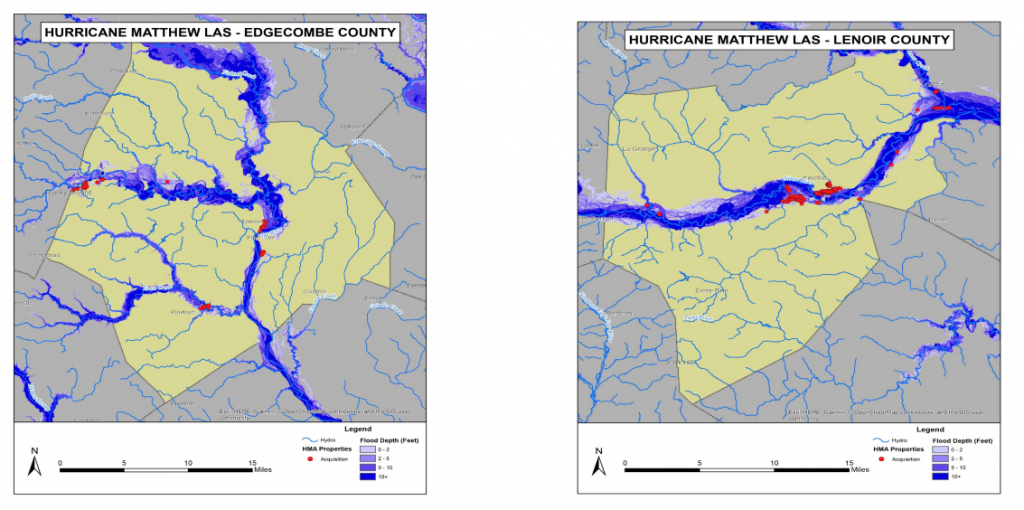USA: Study: Mitigation investments yield returns in eastern North Carolina
A lower percentage of low-to-moderate-income households and mobile homes, and a higher percentage of home ownership, make a community more resilient to natural hazards like hurricanes, according to a new study published on the Coastal Resilience Center website.
Conducted by the firm AECOM, the “Hurricane Floyd/Hurricane Matthew Empirical Disaster Resilience Study” compares the impacts of the two storms on eastern North Carolina and the improvements made by the state after Hurricane Floyd that mitigated the impacts of Hurricane Matthew. The study, led by AECOM’s Dr. Jae Park, was funded by the Department of Homeland Security’s Flood Apex Program.
Hurricane Floyd struck North Carolina in 1999, causing about $2 billion in damages. Hurricane Matthew, which hit the state in 2016, caused about $970 million in damages in North Carolina.
The report’s authors studied 17 theoretical indicators of resilience in six eastern North Carolina counties after Hurricane Matthew: Bertie, Columbus, Edgecombe, Lenoir, Robeson and Wayne. Indicators were divided into social, economic, physical and disaster management categories, and ranged from home ownership rate and availability of parks to unemployment and flood insurance coverage.
The study aimed to quantify “losses avoided” by selected eastern North Carolina communities based on state and local mitigation actions taken between the 1999 and 2016 hurricanes – how actions taken after Floyd helped soften the blow of Matthew. Actions studied include those “intended to enhance community resiliency, support effective and equitable recovery and reduce flood fatalities and losses,” according to the report. Those actions include elevating or buying out flood-prone properties, implementing water-control measures and strengthening roads and bridges. The study also assessed how the indicators of resilience demonstrate whether communities saved time and money as they recovered from Hurricane Matthew.
Conclusions
The study examined 1,138 structures that were bought out across the six counties. The study’s authors evaluated the return on investment on the cost of federal buyouts from 1999 to 2016, which was more than $116 million. The counties studied had about $133 million in avoided losses during Hurricane Matthew, a return-on-investment ratio of about 1.15.
“By comparing acquisition cost data with avoided flood loss data, the study showed that losses avoided in just Hurricane Matthew were greater than the investment in the acquisitions,” according to the report. “Future flood events will increase the benefit to cost ratio.”

Properties in the floodplain acquired via federal buyouts are shown in red for Edgecombe and Lenoir counties in eastern North Caroilina. Image via AECOM.
In addition to the importance of housing types to resilience, the study’s authors concluded that the more road and bridge projects completed with federal disaster recovery funds between 1999 and 2016, the more resilient a community was to the next major flood event.
Several trends emerged from the study. The percentage of households categorized as “low-to-moderate income” correlated strongly to the number of days disaster recovery centers were open and days until public schools reopened after Hurricane Matthew, according to the study. The higher the percentage of housing that was mobile homes, the higher the percentage of households that received housing recovery funds.
The report suggests that data collection in the wake of a disaster – the first days to months of recovery – could better inform the impacts of pre-disaster mitigation. The report’s authors note that such data collection faces major challenges both immediately before and after storms, but that making daily data collection post-disaster part of standard disaster recovery procedures could help better compare regions’ recovery. The report’s authors also recommend making more funds available for post-disaster data collection as part of rapid-response funding.
“Only with reliable data can resilience be examined more closely in the future,” according to the report.